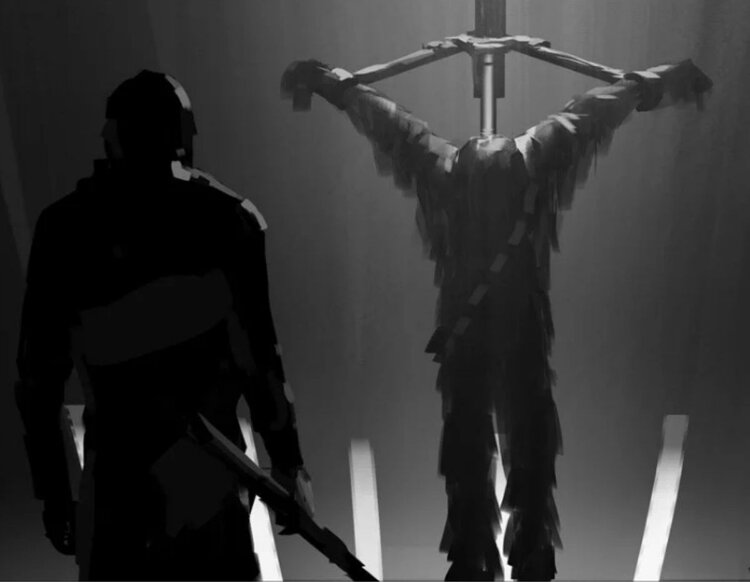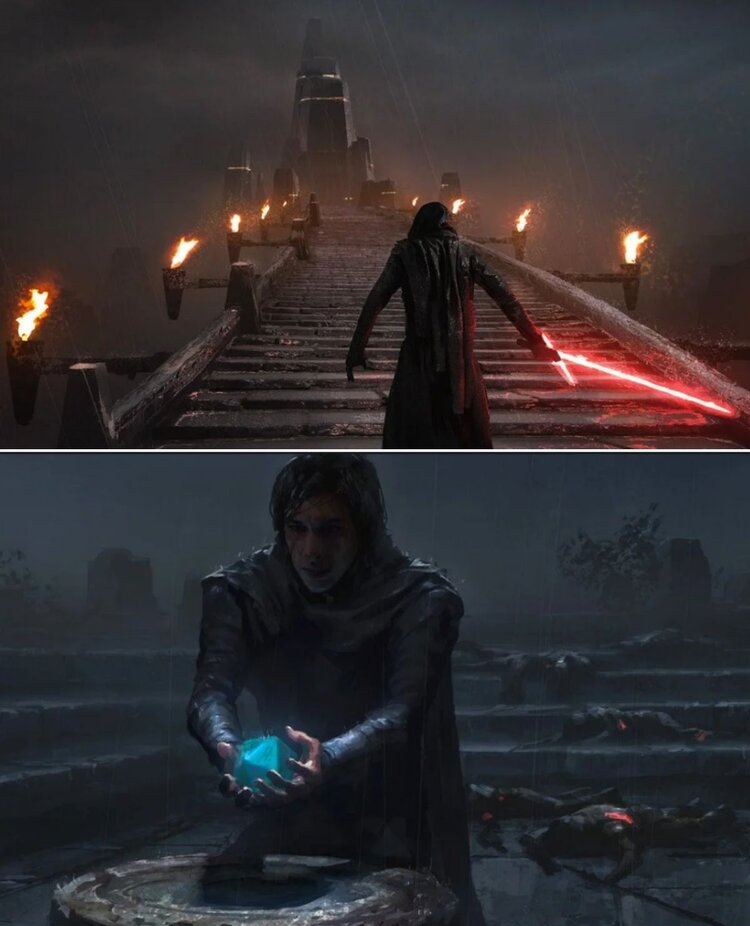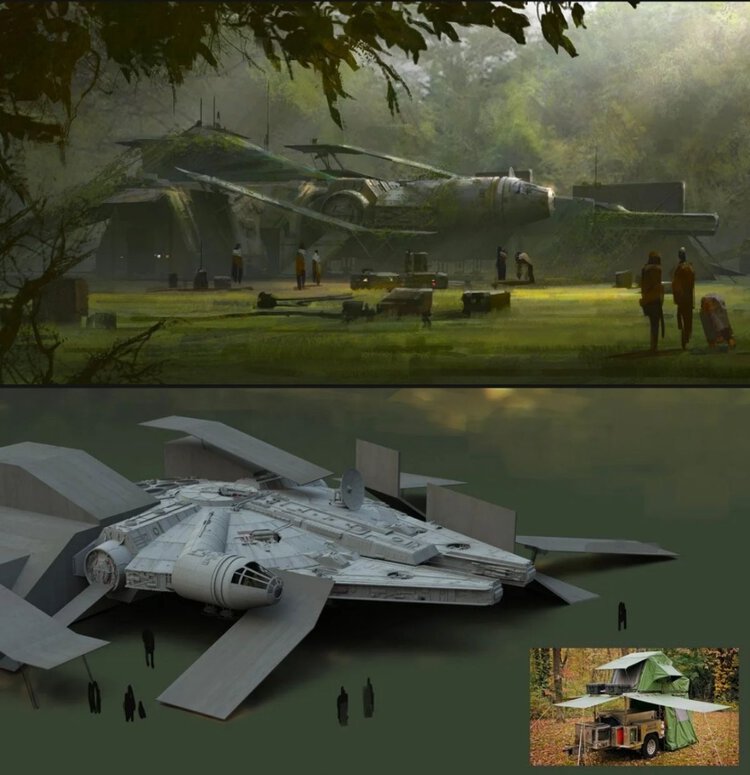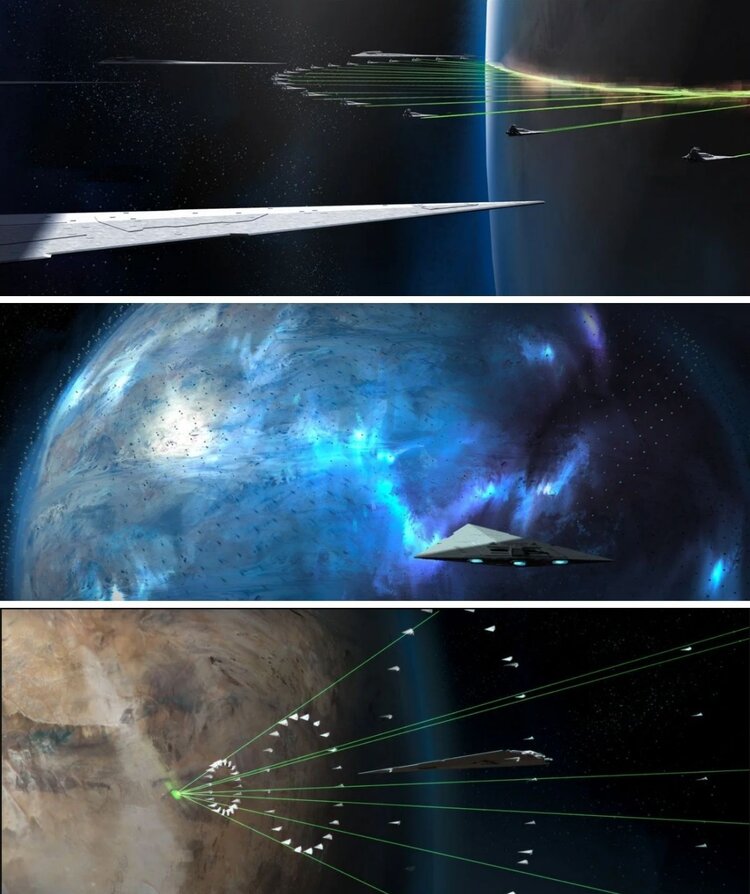The Rise of Skywalker may have wrapped up the Skywalker saga, but what we saw on screen was only part of the story. Behind the scenes, concept artists, writers, and designers explored some truly wild ideas, scenes that were sketched, discussed, and in some cases even filmed, but never made it to the final cut.
Thanks to concept artist Jon McCoy and other sources, we now have a glimpse into what could’ve been: darker character moments, haunting locations, and bold story swings that might’ve changed the tone of the entire film.
Here’s what could’ve changed the entire tone of the final chapter, and trust me, they’re as wild as Star Wars gets.
1. Finn with a Lightsaber on Exegol
As I mentioned earlier, this one is totally based on Jon McCoy’s concept art. You can head directly to McCoy’s blog to see all of his work — and trust me, it’s worth the scroll.
Starting with the idea of Finn wielding a lightsaber on Exegol, that’s not just cool fan service. It’s a radically different take on his arc. It would’ve been a visual and narrative confirmation of his Force sensitivity, something the final film only hints at through vague dialogue and unfinished threads.
McCoy’s sketches show Finn in the thick of the battle, lightsaber in hand, surrounded by chaos. That image alone reframes his role: not just a former stormtrooper turned Resistance fighter, but someone actively channeling the Force in the fight against the Sith. It’s a moment that could’ve elevated his character from reactive to empowered, a parallel to Rey, not just her sidekick.
More importantly, it would’ve reinforced one of the trilogy’s most underdeveloped themes: that the Force belongs to everyone, not just legacy bloodlines. Finn stepping into that space would’ve made the message explicit, and given the audience a second Force-sensitive hero to root for.
Instead, the final cut leaves Finn’s arc unresolved. McCoy’s concept art shows us what could’ve been: a defining moment of clarity, power, and purpose.
2. Chewbacca’s Capture Was Originally Much Darker

Following Finn’s lightsaber moment, the next concept that pushes the boundaries is Chewbacca’s capture, and what was almost shown during it.
Jon McCoy revealed that he was asked to design a torture device specifically for Chewbacca, one that would hold him in “terrible stress positions.” The goal was to create a visually iconic pose, something that would make the scene unforgettable. This wasn’t just about pain; it was about emotional impact. Seeing Chewie, one of the most enduring and beloved characters in the franchise, physically restrained and suffering would’ve added a layer of brutality that the final cut avoids.
If this scene had been included, it could’ve deepened the emotional stakes. Chewbacca’s grief over Han Solo was never fully explored, and placing him in a vulnerable position might’ve forced Kylo Ren — Han’s killer — to confront the consequences of his actions. It also would’ve shown the First Order’s cruelty in a more visceral way, grounding the stakes beyond starships and explosions.
Ultimately, the scene was likely cut to preserve pacing and tone. But McCoy’s designs show how
3. Kylo Ren’s Hunt for the Wayfinder Was Way More Intense Than in the Film

Continuing the thread of darker, more intense character moments, Jon McCoy’s concept art reveals a version of Kylo Ren’s journey to Mustafar that was far more savage than what ended up on screen.
The film opens with Kylo cutting down enemies in a forested landscape, a scene that flashes by with little context. What most viewers didn’t realize is that this location is actually Mustafar, the same planet where Anakin Skywalker fell and Darth Vader was born.
McCoy’s sketches suggest this sequence was originally envisioned as a full-blown battle. He was asked to design Kylo “carving through miscellaneous, unknown enemies” in pursuit of the Sith Wayfinder.
Across the concept art, we see Kylo not just fighting through a forest — but pushing deeper toward Vader’s castle. The path to the Wayfinder wasn’t just guarded; it was hostile. The journey through Mustafar was meant to be a gauntlet, forcing Kylo to confront waves of enemies as he approached the ruins of his grandfather’s legacy.
The implication is clear: Kylo’s path to Exegol was designed as a symbolic descent, a violent pilgrimage through the ashes of Vader’s past. It would’ve added weight to his arc, showing him earn the Wayfinder through blood, obsession, and mythic struggle, rather than a quick montage.
4. The Resistance Base Was Almost the Millennium Falcon

Shifting from character arcs to world-building, Jon McCoy’s concept notes reveal an early idea that would’ve radically changed the visual identity of the Resistance: turning the Millennium Falcon into the actual base.
With the Resistance reduced to a handful of fighters after The Last Jedi, the design team faced a key question — what kind of base could realistically support such a small, mobile force? McCoy pitched a bold solution: the Falcon itself. His vision was inspired by 1980s toy sets, imagining compartments that could slide out and extend, transforming the ship into a modular command center.
It’s a clever idea — one that would’ve made the Falcon more than just a symbol of legacy. It would’ve become the literal heart of the Resistance, evolving from smuggler’s ship to tactical hub. Visually, it could’ve offered a nostalgic yet fresh take, blending retro playset vibes with gritty survivalist design.
Ultimately, the team went with a different direction. The Blockade Runner — a ship with its own legacy dating back to A New Hope — became the foundation for the Resistance base. McCoy and others then shifted to developing that concept, building out a more traditional command vessel.
5. The Final Order Was Way Cooler in Concept

Everyone knows how wasted the Final Order felt in the film, they’re unleashed with dramatic flair, only to be crushed almost immediately. But in Jon McCoy’s concept art, the Final Order was imagined as something far more terrifying and visually powerful.
In development, these Star Destroyers weren’t just part of a fleet, they were planet killers. The concept art shows them gathering in formation around a planet, each one equipped with a superlaser capable of wiping out entire worlds. It’s a chilling image, and one that echoes the Empire’s obsession with superweapons, something fans of the Thrawn novels will recognize as a fatal flaw. The Empire poured resources into two Death Stars, only to lose both in a single day. The Final Order was meant to be a terrifying evolution of that legacy.
Visually, McCoy’s sketches push this idea hard. The fleet isn’t just large, it’s overwhelming. The way they encircle a planet feels ritualistic, like a dark ceremony of destruction. It’s the kind of image that words can’t fully capture, you have to see it to feel the scale.

